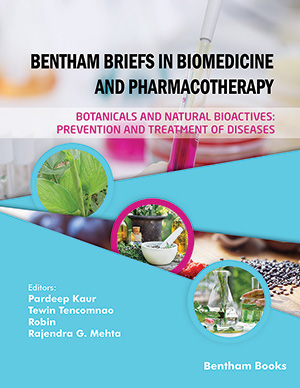Abstract
Background: Ruta montana (R. montana) is a medicinal plant with a long history of traditional use in treating ailments.
Objective: The present work aims to study the phytochemical composition and to evaluate the biological activities of R. montana L. (Rutacea) extracts.
Methods: Bioactive compounds were obtained using solid-liquid extraction using solvents of increasing polarity. The obtained extracts were qualitatively analyzed by liquid chromatography coupled with mass spectrometry (LC-MS). The pharmacological properties of R. montana were also investigated. Antioxidant activity was achieved "in vitro" using two methods: scavenging of the free radical DPPH and total antioxidant capacity. Antimicrobial activity was evaluated using disc diffusion method on 3 pathogenic bacterial strains (Escherichia coli, Pseudomonas aeruginosa and Staphylococcus aureus). In addition, cytotoxic activity was determined by the "Brine shrimp" test.
Results: Chemical investigation allowed the identification of 14 phenolic compounds. The identified compounds were mainly phenolic acids, coumarins and flavonoids. The crude extract and the different tested fractions exhibited an interesting antioxidant activity. Chloroform extract was effective against the growth of the tested bacterial strains with zones of inhibition varying between 14 and 18 mm. In contrast, ethyl acetate and butanolic extracts were almost inactive on all of the tested bacterial strains. Furthermore, the crude extract was found to exhibit antibacterial activity with 11 to 11.66 mm of inhibitions zone. No cytotoxic effect was recorded for all the tested extracts up to a concentration of 4000 μg/mL.
Conclusion: This work highlights the potent bioactivity and acceptable drug-likeness of this plant, which supports its further uses.
Keywords: Biological activities, LC-MS, phytochemical study, Ruta montana, Pseudomonas aeruginosa, coumarins, antimicrobial, flavonoids.





























